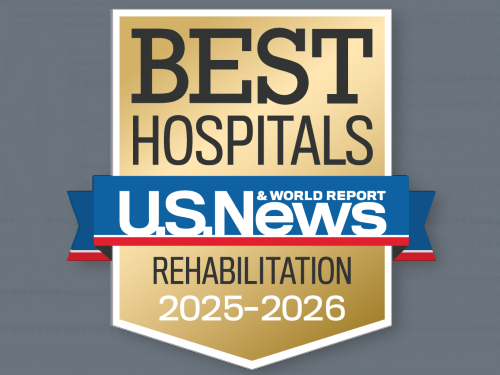TIRR Memorial Hermann launched its unique Purposeful Leader Rounding initiative in 2024, asking hospital leaders to commit one hour per week to patient bedside rounding. The goals of the initiative: to strengthen leadership presence, to address patient concerns in real time and to enhance interdisciplinary collaboration.
The program began with 27 cross-disciplinary managers. By fiscal year-end, patient grievances in pilot units fell by 50%, and the Net Promoter Score (NPS)—a key patient satisfaction measure—increased by 10%. The benefits of the program were particularly pronounced for brain injury and neurobehavioral units, where patients often face long recoveries and cognitive challenges. Additionally, nurses in these units interact primarily with family members or other caregivers, increasing the chance for misunderstanding from the patient perspective.
“I noticed that about 40% of our total patient survey returns were coming from those two units, and their combined NPS was in the 60s, whereas our target is 76.1%,” says Justin White, director of consumer experience at TIRR Memorial Hermann. “So, we needed to do something, but it’s not just about achieving a score—it’s about delivering the best care possible. We found we could improve communication with families.”
Communication became the core of the project. A Leader Rounding Tool was created to facilitate face-to-face interactions across four commonly troublesome areas: care, food/nutrition, environmental services and discharge planning. Participants from a range of disciplines such as case management, pharmacy, operations, radiology and respiratory therapy also received training on de-escalation and challenging conversations. The leaders from the various departments normally had limited in-person patient interactions due to their roles, were now at the bedside, proactively answering questions and addressing any concerns.
“We asked them to make sure that we are assessing the home dynamic from a collective perspective,” White explains. “For example, when the patient is discharged, it’s not just nursing involvement but our case managers coordinating services like home health, durable medical equipment, appointments with a primary care physician and adjustments to vehicles or bathrooms. This proactive approach allowed those other leaders to come around and speak with our patients and families before discharge, to make sure questions were answered.”
The initiative included four sustaining practices:
- Customer focus: Leaders shared “Moments That Matter,” meaningful patient stories that reinforced the importance of customer-centered care.
- Data transparency: NPS and other metrics were shared openly to foster accountability and goal-setting.
- Continuous action planning: Teams leveraged real-time feedback to make immediate improvements.
- Shared accountability: Cross-functional leaders fostered collective ownership of the patient experience.
From February to June of 2024, rounding activity doubled from 500 to 1,000 monthly interactions. NPS improved significantly, from 67.6% to 76.9% and the number of service escalations declined. Staff collaboration improved as communication silos were broken down.
“Collaboration among teams was probably the biggest immediate outcome,” White notes. “We have great departments, everybody’s great at what they do, but this allowed us to cross one another’s paths. Now patients are saying, ‘I can see you all working together. I’m getting the same message from everyone.’”
The outcomes highlight the transformative power of leadership visibility and structured patient engagement. By committing to real-time solutions and shared accountability, health care providers can elevate both patient experiences and internal culture.
“We have to build and maintain an environment of trust among leaders and work together to achieve our common goals,” White says.

Nationally Ranked Rehabilitation
For the 36th consecutive year, TIRR Memorial Hermann is recognized as the best rehabilitation hospital in Texas and No. 2 in the nation according to U.S. News and World Report's "Best Rehabilitation Hospitals" in America.
Learn more about TIRR Memorial Hermann rankings